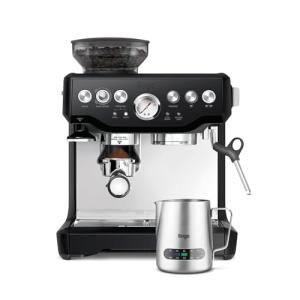What's Holding Back In The Beans To Cup Industry?
페이지 정보
작성자 Penny 작성일25-11-05 02:29 조회3회본문
From Beans to Cup: The Journey of Coffee
Coffee is more than just a drink; it's a global phenomenon that starts its journey from small farms to the cup you sip. Understanding this journey not only deepens appreciation for the drink itself however likewise highlights the environmental, social, and economic factors associated with coffee production. This blog site post will assist the reader through the entire process, from the cultivation of coffee beans to the minute the abundant liquid hits your cup.

The Coffee Plant: Where all of it Begins
The coffee journey begins with the coffee plant, mostly renowned for two main types: Arabica (Coffea arabica) and Robusta (Coffea canephora). Each has distinct qualities, from taste profiles Automatic Bean To Cup Coffee Machine growing conditions.
| Coffee Species | Flavor Notes | Caffeine Content | Growing Altitude |
|---|---|---|---|
| Arabica | Sweet, fruity, floral | Lower | 2,000 - 6,000 feet |
| Robusta | Strong, earthy, bitter | Greater | 600 - 3,600 feet |
The growing conditions for coffee are quite specific and involve altitude, climate, and soil quality.
Native Regions
Coffee originally hails from Ethiopia, where legend recommends it was discovered by a goatherd called Kaldi. Today, the most popular coffee-growing areas consist of:
- Central & & South America (Colombia, Brazil, Guatemala)
- East Africa (Ethiopia, Kenya)
- Southeast Asia (Vietnam, Indonesia)
Cultivation of Coffee Beans
Collecting
The coffee cultivation process requires cautious attention, particularly during the harvesting stage. Here are representative approaches:
- Hand-Picking: Preferred for premium Arabica beans, where just the ripest cherries are selected.
- Mechanical Harvesting: Commonly used for Robusta, enabling effectiveness but often consisting of unripe cherries.
| Gathering Method | Pros | Cons |
|---|---|---|
| Hand-Picking | Quality control | Labor-intensive |
| Mechanical Harvesting | Faster and affordable | Lower quality |
Processing Coffee Cherries
When collected, the coffee cherries need Retro Bean To Cup Coffee Machine be processed Best Budget Bean To Cup Coffee Machine draw out the beans. The 2 primary techniques are:
- Wet Processing: Cherries are depulped, fermented, and washed. This technique produces cleaner flavors.
- Dry Processing: Cherries are sun-dried and hulled. This results in a more powerful, more robust taste.
Roasting: Transforming Beans into Aromatic Gold
Roasting is an essential action that changes green coffee beans into the fragrant delights that coffee fans adore.
Coffee Roast Levels
Roasting can be categorized into various levels:
- Light Roast: Fruity and acidic, keeping the majority of the Best Value Bean To Cup Coffee Machine UK's initial flavor.
- Medium Roast: Balanced flavor with a blend of level of acidity and sweet taste.
- Dark Roast: Bold, abundant, and frequently has a smoky flavor.
| Roast Level | Qualities | Flavor Profile |
|---|---|---|
| Light | Mild acidity, fruity | Floral, berry, citrus |
| Medium | Well balanced sweetness | Caramel, nutty |
| Dark | Low acidity | Chocolate, smoky, bitter |
Brewing Methods: Bringing It All Together
When roasted, the coffee beans are ground and brewed. Different methods impact extraction and flavors, causing a wide variety of brewing choices, including:
- Drip Brew: The most common approach, delivering constant flavor.
- French Press: Offers rich, full-bodied coffee due to the longer high time.
- Espresso: For a concentrated shot, including high pressure and finely ground coffee.
- Put Over: Allows for more control over developing time and temperature level.
| Developing Method | Time | Taste Profile |
|---|---|---|
| Drip Brew | 5-6 minutes | Tidy, consistent |
| French Press | 4-5 min | Full-bodied, robust |
| Espresso | 20-30 sec | Rich, concentrated |
| Pour Over | 3-4 minutes | Brilliant, nuanced flavors |
From Farm to Table: Sustainability Matters
The coffee industry faces various challenges, consisting of climate change, logging, and fair trade practices. Lots of organizations are working towards more sustainable practices:
- Fair Trade: Ensures farmers get fair salaries and promotes sustainable farming.
- Shade-Grown Coffee: Grown under trees to protect the environment.
- Organic Coffee: Grown without artificial fertilizers or pesticides.
Often Asked Questions (FAQs)
1. What is the difference between Arabica and Robusta?
Arabica coffee typically has a sweeter, more intricate taste, while Robusta tends to be more powerful and more bitter. Arabica is likewise lower in caffeine.
2. How should coffee beans be saved?
To maintain freshness, shop coffee beans in an airtight container far from light, heat, and wetness.
3. What developing approach produces the greatest coffee?
Espresso is often considered one of the greatest developing methods due to the high pressure utilized, resulting in a concentrated shot of coffee.
4. Can coffee be grown anywhere?
While coffee can be grown in different places, it thrives in specific climates, especially in the "coffee belt," where temperature levels stay mild and consistent.
5. What are some signs of quality coffee?
Try Bean To Cup Coffee Makers find beans with an uniform color, no cracks, and an abundant fragrance. High-quality coffee will have distinct flavor notes depending upon their origin and processing technique.
Figuring out the journey of coffee from beans to cup exposes an intricate interaction of farming, trade, and cooking art. As millions enjoy this treasured drink daily, an understanding of its journey stimulates a much deeper appreciation for the complexities involved. Efforts towards sustainability and ethical sourcing mean that every cup not just warms your spirit however likewise supports a more accountable coffee culture. So the next time you take pleasure in that aromatic brew, take a minute Best Bean To Cup Filter Coffee Machine assess the journey it has actually made from farm to cup.























 Home
Home  고객센터
고객센터 




